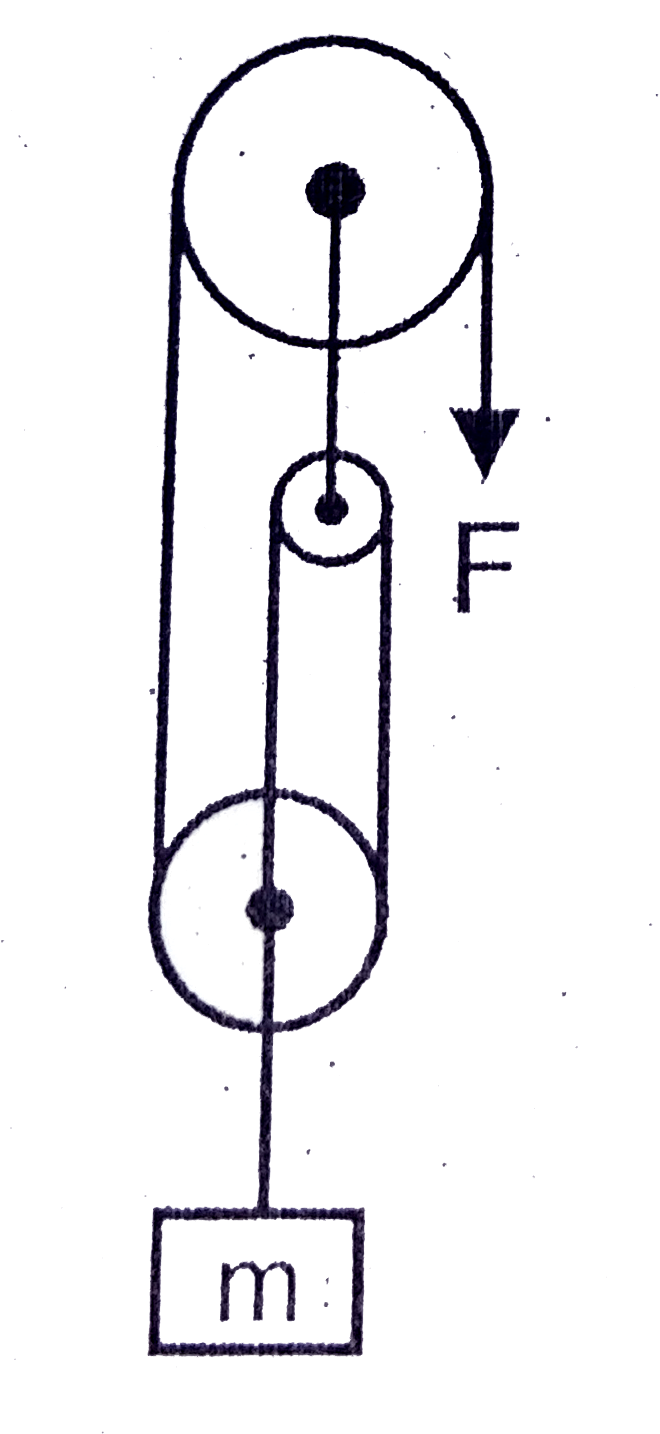
In the figure shown, an observer O1 floats (static) on water surface with ears in air while another observer O2 is moving upwards with constant velocity V1=V5 in water. The source moves down with constant velocity VS=V5 and emits sound of freqeuncy f. The velocity of sound in air is V and that in water is 4V. For the situation shown in figure.
The wavelength of the sound received by O1 is 4V5f
The wavelength of the sound received by O1 is Vf
The frequency of the sound received by O2 is 21f16
The wavelength of the sound received by O2 is 16V5f
The correct Answer is:A, C, D

For observer O1,
λ4=V−VSf=V−V5f=4V5f
For O2, there is change of medium Hence, at the surface of water, keeping frequency unchanged.
Vλa=4VλW
⇒λW=4λa=16V5f
Velocity of wave relative
f''=to observerλW=4V+V5λW
=21V55f16V=21f16
Topper's Solved these Questions
- SOUND WAVES AND DOPPLER EFFECTBOOK - CENGAGE PHYSICS ENGLISHCHAPTER - SOUND WAVES AND DOPPLER EFFECTEXERCISE - Assertion-Reasoning
24 Videos
- SOUND WAVES AND DOPPLER EFFECTBOOK - CENGAGE PHYSICS ENGLISHCHAPTER - SOUND WAVES AND DOPPLER EFFECTEXERCISE - Comprehension
144 Videos
- SOUND WAVES AND DOPPLER EFFECTBOOK - CENGAGE PHYSICS ENGLISHCHAPTER - SOUND WAVES AND DOPPLER EFFECTEXERCISE - Single Correct
252 Videos
- RIGID BODY DYNAMICS 2BOOK - CENGAGE PHYSICS ENGLISHCHAPTER - RIGID BODY DYNAMICS 2EXERCISE - Interger
2 Videos
- SUPERPOSITION AND STANDING WAVESBOOK - CENGAGE PHYSICS ENGLISHCHAPTER - SUPERPOSITION AND STANDING WAVESEXERCISE - Comprehension Type
5 Videos
Similar Questions
In the block moves up with constant velocity v m/s. Find F

View SolutionA particle mass parallel to x-axis with constant velocity v as shown in the figure. The angular velocity of the particle about the origin O

View SolutionA body of mass m moving with a constant velocity v hits another body of the same mass moving with the same velocity v but in the opposite direction and sticks to it. The velocity of the compound body after collision is
View SolutionA particle of mass m moving in the x direction with speed 2v is hit by another particle of mass 2m moving in the y direction with speed v. If the collision is perfectly inelastic, the percentage loss in the energy during the collision is close to
View SolutionWhen the observer moves towards the stationary source with velocity, v1, the apparent frequency of emitted note is f1. When the observer moves away from the source with velocity v1, the apparent frequency is f2. If v is the velocity of sound in air and f1f2 = 2,then vv1 = ?
View SolutionA turck is moving on the ground with a velocity v=12m/s and a box is moving on the truck with respect to it with a velocity u=5m/s as shown in the figure. What is the velocity of the box with respect to the ground?

View SolutionThe source (S) of sound is moving constant velocity v0 as shown in diagram. An observer O listens to the sound emmited by the source. The observed frequency of the sound

View Solution
In the figure shown, a source of sound of frequency 510 Hz moves with constant velocity vS=20ms in the direction shown. The wind is blowing at a constant velocity vW=20ms towards an observer who is at rest at point B. corresponding to the sound emitted by the source at initial position A, the frequency detected by the observer is equal to (speed of sound relative to air is 330ms)
View Solution
In the figure shown, a source of sound of frequency 510 Hz moves with constant velocity vS=20ms in the direction shown. The wind is blowing at a constant velocity vW=20ms towards an observer who is at rest at point B. corresponding to the sound emitted by the source at initial position A, the frequency detected by the observer is equal to (speed of sound relative to air is 330ms)
View SolutionA particle is moving with constant speed v in xy plane as shown in figure. The magnitude of its angular velocity about point O is

View Solution
